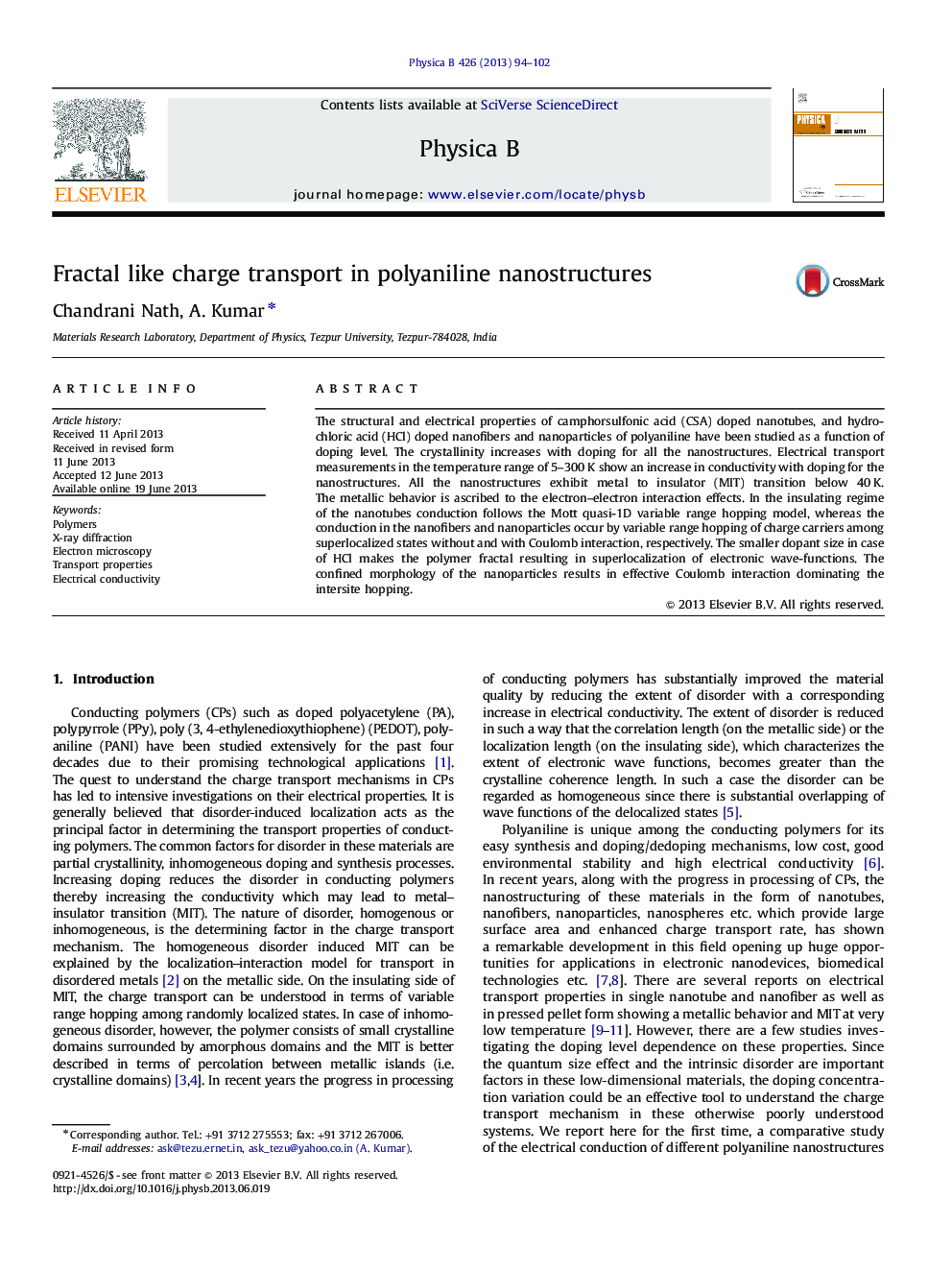| Article ID | Journal | Published Year | Pages | File Type |
|---|---|---|---|---|
| 8163357 | Physica B: Condensed Matter | 2013 | 9 Pages |
Abstract
The structural and electrical properties of camphorsulfonic acid (CSA) doped nanotubes, and hydrochloric acid (HCl) doped nanofibers and nanoparticles of polyaniline have been studied as a function of doping level. The crystallinity increases with doping for all the nanostructures. Electrical transport measurements in the temperature range of 5-300 K show an increase in conductivity with doping for the nanostructures. All the nanostructures exhibit metal to insulator (MIT) transition below 40Â K. The metallic behavior is ascribed to the electron-electron interaction effects. In the insulating regime of the nanotubes conduction follows the Mott quasi-1D variable range hopping model, whereas the conduction in the nanofibers and nanoparticles occur by variable range hopping of charge carriers among superlocalized states without and with Coulomb interaction, respectively. The smaller dopant size in case of HCl makes the polymer fractal resulting in superlocalization of electronic wave-functions. The confined morphology of the nanoparticles results in effective Coulomb interaction dominating the intersite hopping.
Related Topics
Physical Sciences and Engineering
Physics and Astronomy
Condensed Matter Physics
Authors
Chandrani Nath, A. Kumar,
